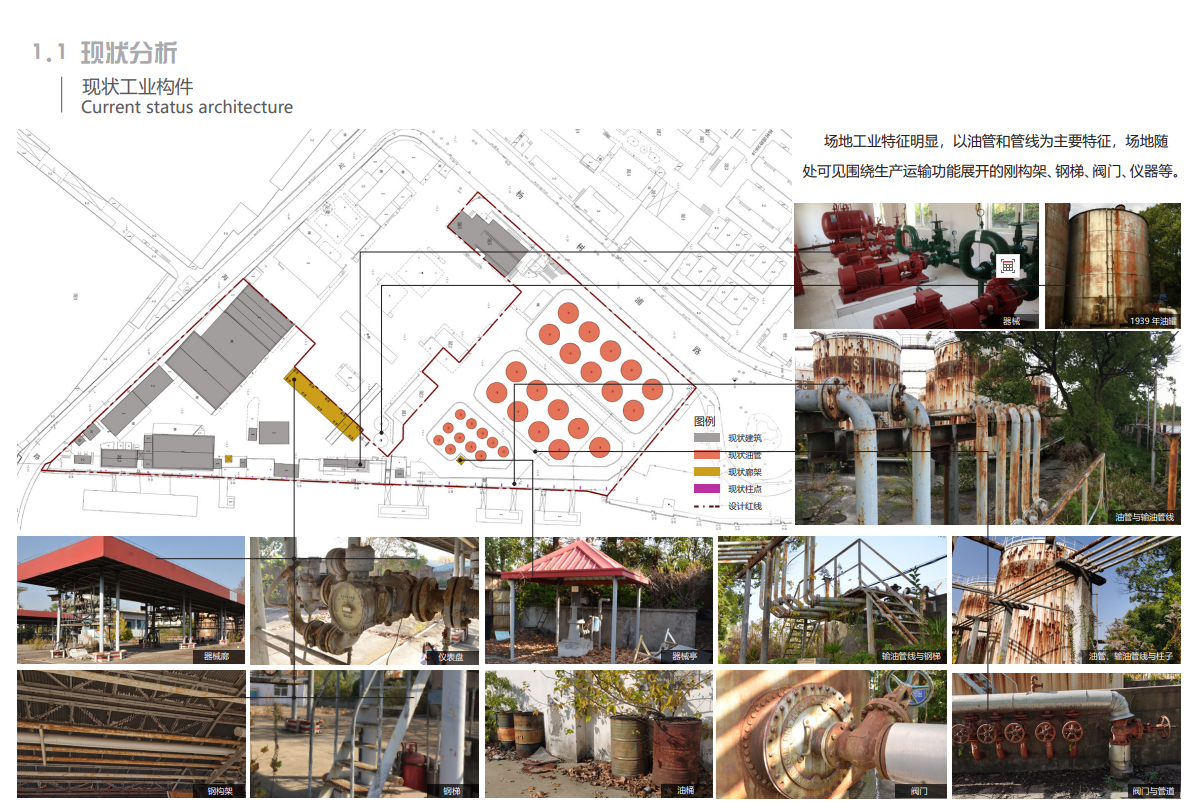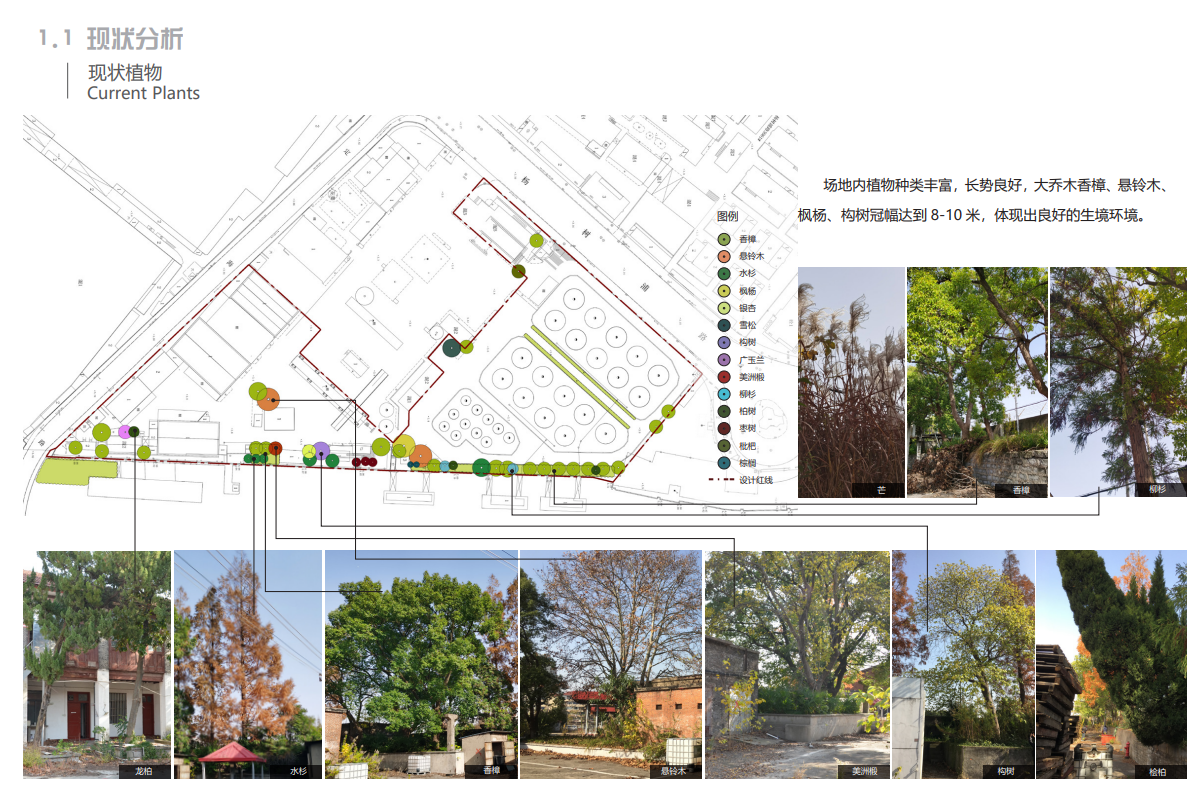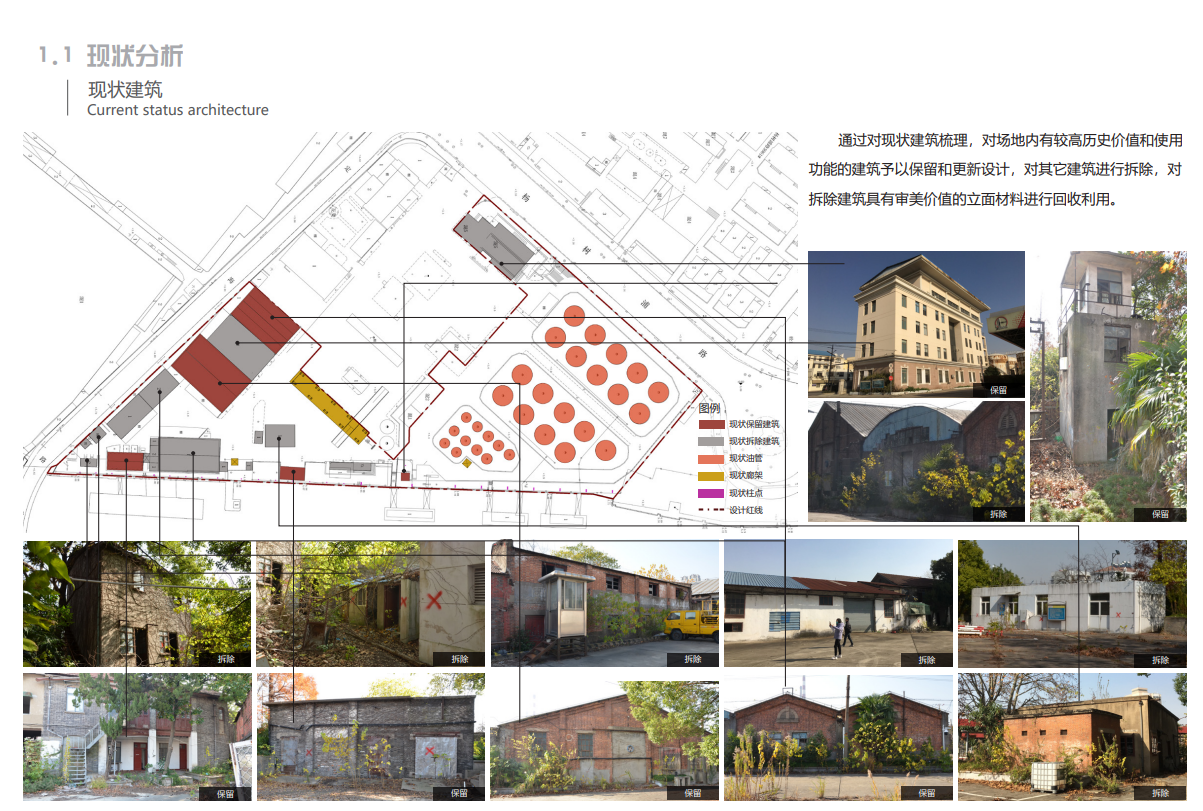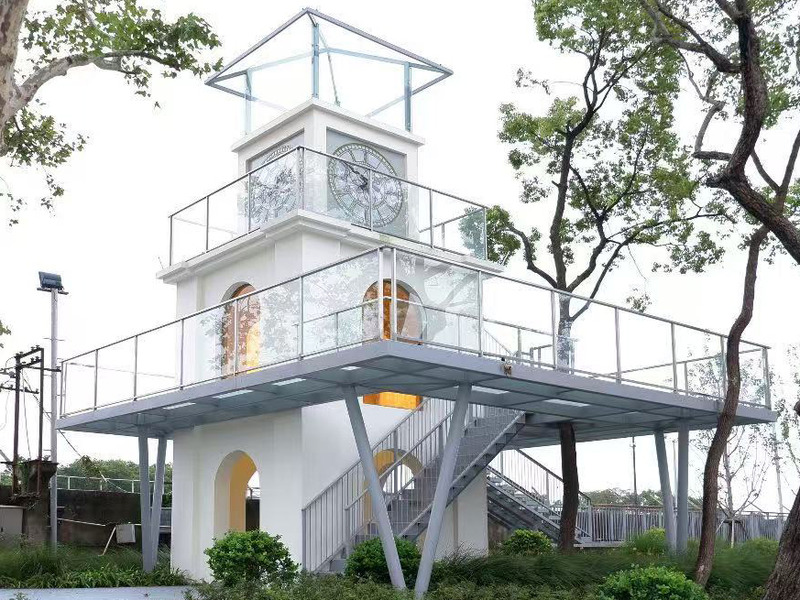This project is an urban renewal initiative located at the former site of the Asiatic Petroleum Company warehouse at No. 3024 Yangshupu Road, Yangpu District, Shanghai. Situated in the middle-northern section of Yangpu Riverside, it lies at the intersection of Fuxing Island Canal and Dinghai Road Bridge, with Dinghai Road and Yangshupu Road serving as its primary interfaces. As one of the key components of the Yangpu Riverside development, the project acts as a vital node connecting the southern and middle-northern sections of the public space. Originally built in the 33rd year of the Guangxu reign (1907), the Asiatic Petroleum Company warehouse has witnessed all significant periods of modern industrial development over the past century, holding immense historical value. After its transformation, the site has been revitalized into the dynamic "Oil Tank" Art Park, blending urban memory with industrial heritage to become a new public activity hub along Yangpu Riverside.


Site Analysis
Through extensive on-site research, the team categorized the industrial remnants, which are characterized by oil pipes and pipelines. The site features steel frameworks, ladders, valves, instruments, and warehouses, all originally designed for oil storage and transportation. The area boasts rich vegetation, including well-grown large trees such as camphor, plane trees, and Chinese wingnuts, reflecting a thriving ecological environment. Based on these findings, the design strategy focuses on preserving valuable existing features, ensuring structural safety, adopting low-intervention approaches to repurpose the site, and enhancing adaptability for future uses.



Low-Impact Development - Minimal Intervention and Localized Design
Valuable buildings, structures, and healthy vegetation were retained. A low-impact approach was used to integrate waterfront walking, cycling, and running paths seamlessly.

Activating Site Memory - Translating Industrial Elements
The existing warehouse was transformed into a cultural and creative building and an art garden, while the oil-loading canopy was repurposed into an artistic leisure corridor. Retaining walls were converted into performance platforms, and pavement designs incorporated pipeline motifs.

The elevated walkway was strategically designed to offer optimal three-dimensional views of the canal.


Functional Updates - Introducing Urban Amenities
The industrial relics were combined with technological landscapes to enhance the quality of open spaces and recreate the atmosphere of the former oil depot. Interactive sports and leisure facilities were introduced to serve diverse urban populations, creating a flexible space that accommodates change and growth.

Key Layouts - An Unforgettable Oil Tank Art Garden
The "Oil Tank" Art Park is divided into three main zones: the Art Park Area, the Canal Vitality Area, and the Oil Tank Exploration Area.
- The Art Park Area features updated structures and improved greenery, forming a cultural and artistic park where industrial heritage coexists with nature.
- The Canal Vitality Area activates the waterfront with sports and recreational activities.
- The Oil Tank Exploration Area preserves the original oil tanks with minimal alterations, merging with the "Canal Light" lighthouse—a symbol of the energy and illumination brought by oil.

Art Park Area - A Creative and Artistic Center
The Art Park Area consists of three main sections: the Great Tree Plaza, the Cultural Source Plaza, and the Power Corridor, creating an artistic hub that incorporates recycled red bricks as a nod to the site's history.
Great Tree Plaza - The Heart of the Site
Centered around a historic plane tree, the Great Tree Plaza serves as an all-ages activity hub.



Cultural Source Plaza - A New Space for Cultural and Creative Exhibitions
Buildings with historical value were preserved and updated, while others were dismantled. Reclaimed materials from demolished structures were repurposed to ensure adaptability for future uses.


Oil Tank Exploration Area - Preserving Unique Industrial Memories
The oil tanks were fully preserved to maintain the industrial ambiance. The design leveraged the uniqueness of existing structures, integrating them into the environment while enhancing interactivity with modern technology.


The three zones of the "Oil Tank" Art Park connect the entire public space, elevate the quality of open areas, revive the oil depot atmosphere, and cater to the recreational and artistic needs of all age groups, forging a cohesive waterfront urban memory. The updated structures and enhanced greenery create an oil tank art garden where industrial heritage and nature coexist harmoniously.
